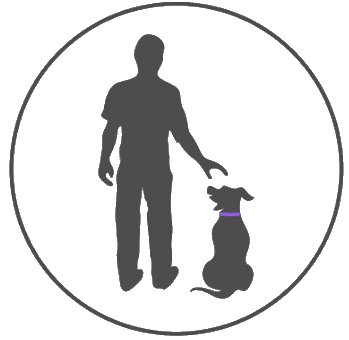Understanding the Foundations of Dog Training
The Evolution of Human-Canine Relationships and Their Significance
The relationship between humans and dogs has evolved significantly over thousands of years, shaping the role dogs play in our lives today. Initially, canines may have been attracted to human settlements for food, gradually leading to a symbiotic relationship where humans provided shelter and food, and dogs offered protection and companionship. This mutually beneficial relationship laid the foundation for the unique bond we share with our canine friends.
Dogs have become integral to human society, providing services ranging from hunting and herding to therapy and companionship. Understanding the historical significance of this evolution can help modern pet owners appreciate the deep-rooted instincts and behavioral traits in their dogs. Recognizing that this bond is built on trust, mutual respect, and clear communication can guide us in training practices that strengthen our relationships with our dogs.
Basic Principles of Dog Psychology and Learning Behavior
To train a dog effectively, it is crucial to understand how dogs think and learn. Dog psychology is based on the principles of operant and classical conditioning. Operant conditioning involves learning through consequences, where behaviors followed by positive outcomes are likely to be repeated. For instance, a dog sitting on command and receiving a treat will associate sitting with a reward, reinforcing the behavior.
Classical conditioning involves creating associations between two stimuli. A common example is Pavlov’s experiment, where dogs learned to associate a bell with food, eventually salivating at the sound of the bell alone. Knowing these principles helps in deploying strategies that reinforce desirable behaviors and mitigate unwanted ones.
Dogs also have a learning style that can be enriched with socialization and mental stimulation. Socialization with other dogs and humans helps them develop good manners and confidence, while mental stimulation through puzzle toys and learning new commands keeps their minds active and teaches problem-solving skills.
Importance of Establishing Clear Communication Between Owner and Dog
Effective communication is the cornerstone of any successful dog training program. Dogs rely mainly on body language and vocal cues for understanding commands and expectations. Consistency in these signals is critical. A verbal command paired with a hand signal, such as saying “sit” while gesturing downwards with an open hand, helps dogs comprehend and remember the command more efficiently.
Non-verbal cues also play a crucial role. For example, maintaining eye contact and using positive facial expressions can encourage your dog and reinforce commands. It is essential to remain patient and consistent, as mixed signals can confuse dogs, making them uncertain about what is expected of them.
Using a calm and assertive tone can help in establishing yourself as a leader without being intimidating. Praise and rewards for good behavior, along with gentle corrections for undesired actions, reinforce the desired communication flow. Faultless communication helps in developing a strong sense of trust and partnership between owner and dog, laying a solid foundation for a well-behaved and happy canine companion.
Understanding these foundations not only aids in effective training but also enhances the deep bond that humans and dogs share. By recognizing the significance of our historical relationship, applying knowledge of dog psychology, and establishing clear communication, we set the stage for a robust and positive training journey.
Maintaining these principles helps in navigating through various training approaches, building trust, and progressing through behavioral transformations.
Different Training Approaches and Their Impact
Understanding the various training methods can significantly influence the effectiveness and overall experience of dog training. Let’s delve into the most common approaches, their benefits, risks, and how to choose the best method for your furry friend.
Positive Reinforcement Training Methods and Their Benefits
Positive reinforcement is a training method that involves rewarding your dog for desired behaviors. Rewards can include treats, praise, petting, or play. The principle is simple: behaviors that are rewarded are more likely to be repeated. This method is rooted in the concept of operant conditioning, where behaviors are influenced by their consequences.
Benefits of Positive Reinforcement
- Encourages Learning and Growth: Positive reinforcement helps dogs learn new commands and tricks rapidly because they associate good outcomes with their actions.
- Fosters a Positive Relationship: This method strengthens the bond between the dog and the owner by fostering mutual trust and respect.
- Builds Confidence: Dogs trained with positive reinforcement are generally more confident and less stressed because they are consistently receiving positive feedback.
- Mitigates Problematic Behaviors: It helps in mitigating unwanted behaviors by redirecting the dog’s focus to what they should be doing rather than punishing them for mistakes.
For instance, teaching a dog to sit and rewarding them immediately with a treat reinforces the behavior. Each correct response is followed by praise or a treat, making the training sessions enjoyable for the dog.
Comparison with Aversive Training Techniques and Potential Risks
Aversive training methods, also known as punishment-based training, use unpleasant stimuli to discourage unwanted behaviors. Tools and techniques under this method include choke chains, shock collars, squirt bottles, and physical corrections.
Risks of Aversive Training
- Induces Fear and Anxiety: These methods can make training a negative experience, leading to fear, anxiety, and aggression in dogs.
- Damages the Human-Canine Bond: Instead of building trust, aversive methods can harm the relationship, causing the dog to fear the owner rather than respect them.
- Short-Term Compliance: While these techniques may produce immediate results, they often do not provide long-term behavioral solutions. The dog might follow commands out of fear rather than understanding.
- Contains Ethical Concerns: Many animal welfare organizations advocate against aversive training due to its potential for causing physical and psychological harm.
An example of aversive training is using a shock collar to stop a dog from barking. While the dog may stop barking momentarily, the fear of the shock might lead to anxiety and other behavioral issues over time.
Choosing the Right Training Approach Based on Dog Temperament
Dogs are individuals with unique personalities, and what works for one might not work for another. Here’s how to select the appropriate training approach:
- Assess Your Dog’s Temperament: Consider whether your dog is sensitive, confident, aggressive, or fearful. Positive reinforcement works well for most dogs but is especially beneficial for shy or anxious dogs.
- Consider Your Training Goals: What are you aiming to achieve? If the goal is to build a robust and trusting relationship, positive reinforcement is ideal.
- Evaluate Your Own Experience: Your comfort and experience level with training methods can also guide your choice. Positive reinforcement is user-friendly and can be easily managed by novice trainers.
- Seek Professional Guidance: When in doubt, consulting with a professional dog trainer can provide personalized recommendations based on your dog’s specific needs and responses.
Choosing the right training approach not only helps in effective behavior correction but also ensures that training sessions are enjoyable and productive for both you and your dog.
By understanding and implementing the right training approach, you set the stage for a successful and rewarding training journey. The journey of training is also about building trust and creating positive associations, which are pivotal for fostering strong emotional bonds.
Building Trust Through Training
Creating Positive Associations During Training Sessions
Building trust with your dog starts with creating positive associations during training sessions. Positive reinforcement, where desirable behavior is rewarded, helps dogs understand what is expected. Treats, verbal praise, and physical affection are effective rewards. This method not only makes training enjoyable but also fosters a sense of security and trust.
Dogs learn best in environments where they feel safe and supported. By consistently using positive reinforcement, you create a predictable and encouraging atmosphere for your dog. Over time, this approach helps in associating training sessions with positive experiences, making your pet more likely to participate willingly and enthusiastically.
Developing Consistent Routines and Boundaries
Consistency is key in dog training. Dogs thrive on routine and knowing what to expect. It is crucial to establish a consistent training schedule, so your dog understands when it is time to learn. Regular routines help in reinforcing the learned behaviors and making them a part of your dog’s daily habits.
Setting clear boundaries is equally important. Boundaries ensure that your dog knows what behaviors are acceptable and what are not. This clarity helps prevent confusion and reduces anxiety. For instance, if you train your dog not to jump on furniture, consistently enforce this rule to avoid mixed signals.
Strengthening Emotional Bonds Through Shared Learning Experiences
Training sessions provide an excellent opportunity to strengthen the emotional bond between you and your dog. When both the owner and dog are engaged in learning, they naturally develop a deeper connection. Shared learning experiences foster mutual respect and understanding.
Interactive games, such as fetch or agility training, are effective in building this bond. These activities not only reinforce obedience but also provide physical and mental stimulation for your dog. Celebrating small achievements together boosts your dog’s confidence and reinforces the positive attachment to training sessions.
Ultimately, by creating positive associations, maintaining consistency, and bonding through shared activities, you are laying a solid foundation for a trusting and fulfilling relationship with your dog. The progress you make together in training will reflect in your dog’s behavior and the strength of your bond.

The Role of Owner Psychology
Understanding Owner Expectations and Realistic Goal Setting
As a dog owner, it is essential to set realistic expectations and goals for the training process. This foundation not only helps in developing achievable steps but also fosters a positive experience for both the owner and the dog. The initial step involves understanding the specific needs of your canine companion. This includes acknowledging factors like breed, age, temperament, and past experiences that may influence their learning pace and behavior.
Setting realistic goals begins with clearly defining what you hope to achieve through training. Are you focusing on basic commands, correcting specific behavioral issues, or aiming for advanced training? Once defined, break down these goals into smaller, manageable steps. Each small achievement paves the way for more complex tasks, creating a structured and comprehensible path for your dog.
Managing Emotional Responses During Training Process
Training a dog can be an emotionally taxing endeavor. It’s crucial for owners to recognize and manage their emotional responses during the process. Understanding that frustration, impatience, and stress can negatively impact the training environment is the first step in maintaining emotional control.
To stay calm and composed, practice mindfulness and stress-relief techniques. Taking deep breaths, engaging in brief physical activity, or even taking short breaks can help reset your emotional state. Remember, dogs are highly perceptive to human emotions and can mirror your feelings, which can affect their learning process. Therefore, maintaining a positive demeanor can encourage your dog and foster a supportive training atmosphere.
Developing Patience and Consistency in Training Approach
Patience and consistency are key pillars in successful dog training. Training sessions should be regular, short, and frequent, as prolonged sessions can lead to boredom and diminished focus for both the dog and the owner. Maintaining a consistent routine allows your dog to anticipate the training schedule, which helps in building a structured and reliable learning environment.
Consistency isn’t solely about timing but also about the commands and rewards. Use the same verbal cues and hand signals for specific behaviors to avoid confusing your dog. Rewards should be immediate and appropriate to reinforce the desired behavior effectively. Over time, this consistency will help your dog understand exactly what is expected, leading to better compliance and quicker learning.
Moreover, patience is required when training dogs with different temperaments. Some dogs may learn quickly, while others may take longer to grasp new commands. By remaining patient, you provide your dog with the time and reassurance needed to learn at their own pace. This approach also strengthens the bond between you and your dog, fostering a relationship built on trust and understanding.
Training a dog is a rewarding journey that can transform your relationship with your furry friend. By understanding and managing your psychology, you can create a positive, consistent, and effective training environment that benefits both you and your canine companion.
Behavioral Transformation and Progress
Behavioral transformation in dogs is a journey that requires understanding, patience, and consistency. As dog owners, it is crucial to monitor progress meticulously to ensure long-term success. This chapter delves into common behavioral issues, techniques for tracking progress, and strategies for maintaining those hard-earned improvements.
Identifying and Addressing Common Behavioral Issues
Common behavioral problems in dogs can range from aggression and anxiety to destructive chewing and excessive barking. Identifying these issues early on and addressing them appropriately is essential to prevent them from becoming entrenched habits.
- Aggression: Aggressive behavior can be a serious problem. It often stems from fear, territoriality, or past traumas. Professional guidance is recommended to safely manage and correct aggression.
- Anxiety: Anxiety in dogs can manifest as separation anxiety, fear of loud noises, or general nervousness. Creating a safe space for your dog and gradual desensitization techniques can help alleviate anxiety.
- Destructive Chewing: This can be a sign of boredom, teething, or anxiety. Providing appropriate chew toys and ensuring your dog gets enough physical and mental stimulation can curb this behavior.
- Excessive Barking: Understanding the root cause of the barking, such as boredom, alert, or separation anxiety, is crucial. Training techniques like the “quiet” command and rewarding silence can help manage this behavior.
Addressing these issues often requires a multi-faceted approach that includes positive reinforcement, consistent routines, and sometimes professional help.
Tracking and Measuring Training Progress
Monitoring your dog’s progress is vital to ensure that the training methods are effective and to make any necessary adjustments.
- Keep a Training Journal: Document your dog’s progress in a training journal. Note the dates, behaviors worked on, methods used, and outcomes. This record can help identify what works best and highlight any patterns or recurrent issues.
- Use Consistent Commands: Consistency in commands and hand signals ensures that your dog understands what is expected. Track how well your dog responds to these commands over time.
- Set Incremental Goals: Break down training goals into smaller, achievable steps. Celebrate each success to keep both you and your dog motivated.
- Regular Assessments: Schedule regular assessments to evaluate progress. This can include testing the dog’s behavior in different environments and situations to ensure generalization of the training.
Consistently tracking and measuring progress helps in identifying any regressions early and reinforces the positive behaviors.
Maintaining Long-Term Behavioral Improvements
Maintaining the behavioral improvements gained through training is an ongoing process. It requires continued effort and vigilance.
- Regular Training Sessions: Even after initial success, continue regular short training sessions to reinforce the learned behaviors. These sessions should be positive and enjoyable to keep your dog engaged.
- Consistent Environment: Maintaining a consistent environment and routine helps in reinforcing the training. Any significant changes in the dog’s environment or routine should be managed carefully to prevent confusion or anxiety.
- Positive Reinforcement: Continue to use positive reinforcement to reward good behavior. This reinforces the idea that positive actions yield positive outcomes.
- Stay Updated with Training Techniques: The field of dog training is always evolving. Stay informed about new training methods and techniques through reliable resources and professional trainers.
Implementing these strategies will help ensure that the positive behaviors are maintained, leading to a happier and more harmonious relationship between you and your canine companion.
As we conclude this segment on behavioral transformation and progress, our journey towards supporting and enhancing the training process continues. By understanding and addressing common behavioral issues, tracking progress meticulously, and maintaining improvements, we pave the way for a rewarding and fulfilling relationship with our dogs.
Supporting the Training Journey
Accessing Reliable Training Resources and Education
Accessing reliable training resources is essential for any pet parent who wants to provide the best training for their dog. In today’s digital age, there are numerous sources available at our fingertips. However, not all resources are created equal, and it’s important to seek materials from reputable experts and organizations.
- Books and Guides: There are many well-regarded books written by experienced dog trainers and behaviorists. Some books provide comprehensive training programs, while others focus on specific issues such as aggression, anxiety, or house training.
- Online Courses and Webinars: Many dog training professionals offer online courses and webinars. These can range from free introductory sessions to more advanced, paid modules. It’s beneficial to choose courses accredited by recognized institutions or trainers with credentials.
- Professional Trainers: Working directly with a certified dog trainer can provide personalized guidance and feedback. Look for trainers with certifications from reputable organizations like the Certification Council for Professional Dog Trainers (CCPDT) or the Association of Professional Dog Trainers (APDT).
Building a Support Network for Ongoing Learning
Building a support network is crucial for sustained success in dog training. A strong network provides advice, encouragement, and camaraderie.
- Local Training Groups: Many communities have clubs or groups that meet regularly for training sessions. These can be an excellent way to share experiences, solve common problems, and socialize your dog.
- Online Communities: Forums, social media groups, and online discussion boards can be a great source of support. Participate in groups that foster positive reinforcement and constructive feedback.
- Friends and Family: Involving friends and family in your dog’s training can help maintain consistency. Ensure they understand and apply the same training methods and commands.
Maintaining Motivation Throughout the Training Process
Training a dog requires commitment, and maintaining motivation can be challenging. Here are some strategies to stay motivated:
- Set Realistic Goals: Break down the training process into small, manageable steps. Celebrate small victories to keep yourself and your dog motivated.
- Keep Training Sessions Short: Regular, short training sessions are more effective than long, sporadic ones. This keeps both you and your dog engaged without becoming overwhelmed.
- Variety in Training: Mix up the training exercises to prevent boredom. Incorporate play, new commands, and fun activities.
- Consistent Schedule: Establish a regular routine for training. Consistency helps reinforce learning and builds confidence in your dog.
- Positive Attitude: Stay optimistic and patient. Dogs respond to the emotions of their owners, so maintaining a positive attitude can enhance the training experience.
By accessing reliable resources, building a support network, and maintaining motivation, pet parents can create a successful and rewarding training journey. This involves staying informed and connected, setting achievable goals, and fostering a supportive environment.
This forms a strong foundation for the continuous development and improvement of your dog’s behavior and strengthens the human-canine bond.










